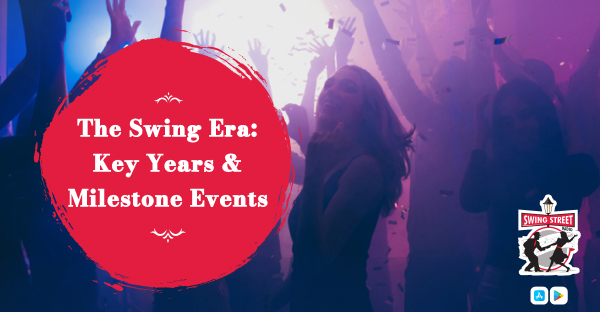Know About the Swing Era: Key Years & Milestone Events
The Swing Era is regarded as a seminal time in American music history, influencing national sounds capes and making a lasting impact on society and culture. Swing music in the USA won over millions of hearts and feet between the late 1920s and the mid-1940s, establishing a colorful, exuberant, and uniquely American sound. This blog explores the pivotal years and significant occasions that shaped the Swing Era, showing the development of this genre that still has an impact on music today.
Swing music's origins can be found in the jazz orchestras' experimental use of novel rhythms and arrangements in the late 1920s. Benny Goodman, whose ensemble rose to prominence in the late 1930s, was one of the first innovators of the swing genre. As orchestras became larger, the collection of big band and swing music began to gain speed, adding brass and reed instruments for a broader, more dramatic sound.
Key Years and Milestone Events
1935 - Benny Goodman's Carnegie Hall Concert: Many people view Benny Goodman's landmark 1935 Carnegie Hall concert as the catalyst for the Swing Era. Jazz and swing music gained recognition as a valid art form thanks to this occasion, which elevated it to a prominent platform. Goodman and his orchestra gave outstanding performances at the concert, securing his title as the "King of Swing."
1938: The Swing Era Takes Off: The Swing Era peaked in the late 1930s when big bands fronted by stars like Glenn Miller, Count Basie, and Duke Ellington ruled the radio. Enthusiasts from all over the nation crowded dance halls and ballrooms, ready to jitterbug and Lindy Hop to the contagious sounds of swing. Big band and swing records become a necessary component of any music lover's record collection.
1941 - Glenn Miller's Orchestra: With singles like "Chattanooga Choo Choo" and "In the Mood," Glenn Miller's orchestra experienced unheard-of popularity in 1941. Miller became one of the most well-liked bandleaders of the day with his well-thought-out arrangements and memorable songs. His music became a byword for the era and offered solace as a soundtrack to the turbulent years of World War II.
1942 - The Recording Ban: The American Federation of Musicians' 1942 recording ban put a temporary stop to the release of new records. This resulted in a dearth of new material but stimulated a live performance boom. Big bands kept on touring, taking audiences throughout the country directly to the heart of swing music's electric intensity.
1945: The Swing Era's End: The Swing Era came to an end along with World War II. The post-war era witnessed a shift in musical preferences, with the emergence of bebop and other genres heralding the end of big band swing's hegemony. Still, swing music in USA continued to have an impact, inspiring later generations and creating a lasting legacy.
Conclusion




Comments
Post a Comment